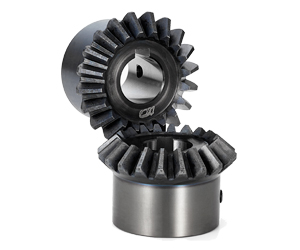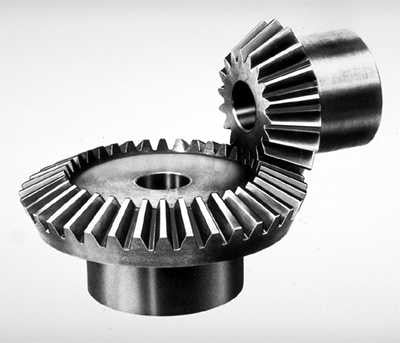Product Description
China Factory CNC Machining Steel Girth /Planet /Timing/Worm/Helical/Ring/Pinion/Herringbone/Screw/Rack/Bevel/Spur/Shaft/Drive/Wheel/Miter/Internel Gears Gear
| Material | Stainless steel, steel, iron, aluminum, gray pig iron, nodular cast iron malleable cast iron, brass, aluminium alloy |
| Process | Sand casting, die casting, investment casting, precision casting, gravity casting, lost wax casting, ect |
| Weight | Maximum 300 tons |
| Standard | According to customers’ requirements |
| Surface Roughness | Up to Ra1.6 ~ Ra6.3 |
| Heat Treatment | Anneal, quenching, normalizing, carburizing, polishing, plating, painting |
| Test report | Dimension, chemical composition, UT, MT, Mechanical Property, according to class rules |
| Port of loading | HangZhou or as customer’s required |
1.How can I get the quotation?
Please give us your drawing,quantity,weight and material of the product.
2.If you don’t have the drawing,can you make drawing for me? Yes,we are able to make the drawing of your sample duplicate
the sample.
3.When can I get the sample and your main order time? Sample time: 35-40 days after start to make mold. Order time: 35-40 days,
the accurate time depends on product.
4.What is your payment method? Tooling:100% T/T advanced Order time:50% deposit,50%to be paid before shipment.
5.Which kind of file format you can read? PDF, IGS, DWG, STEP, MAX
6.What is your surface treatment? Including: powder coating, sand blasting, painting, polishing, acid pickling, anodizing, enamel, zinc plating, hot-dip galvanizing, chrome plating.
7.What is your way of packing? Normally we pack goods according to customers’ requirements.
| Application: | Machinery |
|---|---|
| Hardness: | Hardened Tooth Surface |
| Gear Position: | External Gear |
| Manufacturing Method: | Cast Gear |
| Toothed Portion Shape: | Spur Gear |
| Material: | Cast Steel |
| Customization: |
Available
| Customized Request |
|---|

What are the factors to consider when selecting miter gears for an application?
When selecting miter gears for an application, several factors need to be taken into consideration to ensure optimal performance and compatibility. Here are some key factors to consider:
1. Load Requirements:
Determine the magnitude and type of load that the miter gears will be subjected to. Consider factors such as torque, speed, and direction of rotation. This information helps in selecting miter gears with the appropriate load capacity and tooth strength to handle the application’s requirements.
2. Gear Ratio:
Identify the desired gear ratio, which is the ratio of the number of teeth between the input and output gears. The gear ratio determines the speed and torque relationship between the gears. Select miter gears with a gear ratio that meets the specific speed and torque requirements of the application.
3. Accuracy and Precision:
Determine the required level of accuracy and precision for the application. Certain applications, such as precision instruments or robotics, may require miter gears with high precision and low backlash to ensure accurate motion transmission.
4. Space Constraints:
Evaluate the available space for the miter gears within the system. Consider the gear dimensions, shaft orientations, and clearance requirements. Choose miter gears that can fit within the available space while still allowing for proper meshing and alignment.
5. Noise and Vibration:
Consider the acceptable levels of noise and vibration for the application. Spiral bevel gears, for example, are known to reduce noise and vibration compared to straight bevel gears. Select miter gears with suitable tooth profiles and designs to minimize noise and vibration if required.
6. Lubrication and Maintenance:
Assess the lubrication and maintenance requirements of the miter gears. Some miter gears may require specific lubrication methods or periodic maintenance. Consider the ease of access for lubrication and maintenance tasks when selecting miter gears.
7. Environmental Factors:
Take into account the environmental conditions in which the miter gears will operate. Factors such as temperature extremes, moisture, dust, chemicals, or exposure to corrosive substances can impact gear performance. Choose miter gears that are suitable for the specific environmental conditions of the application.
8. Cost and Availability:
Consider the cost and availability of the miter gears. Evaluate the overall value proposition, including the initial cost, long-term maintenance costs, and the availability of spare parts. Balance the cost factor with the desired performance and reliability.
By considering these factors, engineers and designers can select miter gears that are well-suited for the application’s requirements, ensuring efficient and reliable operation.
“`
Can miter gears be used to redirect rotational motion in machinery?
Yes, miter gears can be used to redirect rotational motion in machinery. Let’s delve into the details:
1. Change in Direction:
Miter gears are specifically designed to change the direction of rotational motion. By meshing two miter gears together, the input rotational motion can be redirected at a 90-degree angle. This ability to change the direction of rotation makes miter gears ideal for applications where a change in the orientation of the machinery or the direction of movement is required.
2. Perpendicular Shaft Arrangement:
Miter gears achieve rotational redirection by utilizing a perpendicular shaft arrangement. The intersecting shafts of the gears allow for the input and output shafts to be oriented at a right angle. As a result, when one gear rotates, it transfers the rotational motion to the other gear at a 90-degree angle, redirecting the motion along a different axis.
3. Compact Design:
Miter gears have a compact design, which is advantageous when redirecting rotational motion in machinery. Their conical shape and intersecting shaft arrangement allow for efficient use of space. This compactness is particularly beneficial in applications where there are space constraints or a need to optimize the overall size of the machinery.
4. Precise and Reliable Redirection:
Miter gears provide precise and reliable redirection of rotational motion. When designed and manufactured with precision, the straight teeth of miter gears ensure smooth meshing and engagement, resulting in minimal backlash and accurate transmission of rotational motion. This precision allows for consistent and dependable redirection of the rotational motion without loss of power or efficiency.
5. Speed Adjustment:
In addition to changing the direction of rotation, miter gears can also be used to adjust the speed of the output shaft. By varying the number of teeth on the gears or incorporating additional gears, the rotational speed can be increased or reduced as desired. This speed adjustment capability adds flexibility to the machinery, enabling it to adapt to different operational requirements.
6. Common Applications:
Miter gears find wide applications in various machinery where rotational motion redirection is needed. They are commonly used in automotive differentials, robotics, machine tools, printing machinery, camera lenses, and many other mechanical systems. Their ability to redirect rotational motion reliably and efficiently makes them a popular choice in these industries and beyond.
In summary, miter gears are well-suited for redirecting rotational motion in machinery. Their ability to change the direction of rotation, compact design, precise and reliable operation, speed adjustment capability, and widespread use in different industries make them a valuable component for achieving rotational motion redirection in various mechanical systems.

Can you explain the unique design of miter gear teeth?
The design of miter gear teeth is distinct and plays a crucial role in the functionality of these gears. Here’s a detailed explanation:
1. Tooth Shape:
Miter gear teeth have a straight shape, similar to spur gears. However, unlike spur gears where the teeth are parallel to the gear axis, miter gear teeth are cut at a right angle to the gear’s face. This allows the teeth to engage correctly when two miter gears mesh together at a 90-degree angle.
2. Equal Number of Teeth:
Miter gears have an equal number of teeth on both gears in a pair. This ensures proper meshing and smooth transmission of rotational motion between the gears. The equal number of teeth is essential for maintaining a constant speed ratio and preventing any slippage or irregular motion.
3. Conical Shape:
Another unique aspect of miter gear teeth is the conical shape of the gears themselves. The teeth are cut on the conical surface, which allows for proper engagement and transmission of motion between intersecting shafts. The conical shape ensures that the teeth mesh correctly, providing efficient power transmission at the desired angle.
4. Meshing at 90-Degree Angle:
Miter gears are designed to mesh at a 90-degree angle, allowing for power transmission between intersecting shafts. The teeth are specifically cut to facilitate this arrangement, ensuring that the gears engage smoothly and transmit rotational motion without any loss or disruption.
5. Tooth Contact and Load Distribution:
When miter gears mesh, the contact between the teeth occurs along a single line, known as the line of contact. This concentrated contact area enables effective load distribution and ensures that the gear teeth bear the transmitted torque evenly. Proper tooth contact is vital for minimizing wear and maintaining the longevity of the gears.
6. Lubrication and Noise Reduction:
The unique design of miter gear teeth can influence lubrication and noise levels. Adequate lubrication is essential to reduce friction and wear between the teeth during operation. Additionally, the straight tooth profile of miter gears tends to produce more noise compared to gears with helical or curved teeth. Proper lubrication and noise reduction measures are often employed to optimize the performance of miter gears.
In summary, the unique design of miter gear teeth includes their straight shape, equal number of teeth, conical shape of the gears, meshing at a 90-degree angle, tooth contact along a line, and considerations for lubrication and noise reduction. These design features ensure efficient power transmission, proper load distribution, and reliable operation in mechanical systems that utilize miter gears.


editor by CX 2023-09-11